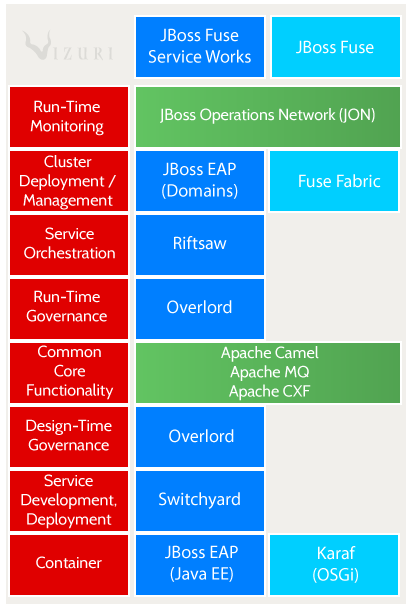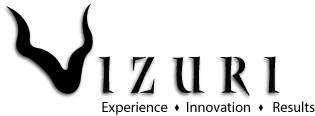I saw a blog from Zack at Vizuri comparing JBoss Fuse vs Fuse Service Works. I thought it would be good to give a brief introduction to the integration products, A-MQ, Fuse and Fuse Service Works, and then share an excerpt from his blog on Fuse vs Fuse Service Works. I also included some links around Camel on EAP.
Products:
JBoss A-MQ- Summary: JBoss A-MQ is a high performance, flexible, lightweight messaging platform.
- Components: ActiveMQ on Karaf
- High performance messaging-A reliable messaging platform that supports standard messaging paradigms for a real-time enterprise.
- Cross-language and multi-protocol support-Allows native connectivity from applications written in Java, C, C++. Multiple transport protocols for exchanging data between applications, services and devices. Supports JMS 1.1, TCP, SSL, STOMP, NMS, MQTT, AMQP 1.0.
- Cloud ready-Deploy on premise, in the cloud or in a hybrid configuration.
- Download: http://www.jboss.org/products/amq/download/
- Summary: JBoss Fuse is a lightweight integration platform.
- Components: ActiveMQ, Camel, CXF, Fuse Fabric on Karaf
- Pattern based integration framework-Leverage Apache Camel to provide a full-featured, easy-to-use and intuitive framework for quicker integration solutions.
- Dynamic configuration and management-Change configuration while container is running. Easily deploy or update services across nodes while the ESB is running.
- Multiple connectivity options-Connect to external applications with connectors for JDBC, FTP/SFTP, HTTP/HTTPS, file, SalesForce.com, SAP, Twitter, and more.
- Full support of AMQP 1.0 - provides wire-level compatibility across connections
- Vast library of connectors - over 150+ out-of-the-box-connectors via Apache Camel
- Managed integration routes - start, stop, measure and trace Camel routes on-premise or in the Cloud
- Improved high availability (HA) - embedded message store for shared-nothing HA
- Download: http://www.jboss.org/products/fuse/download/
- Summary: JBoss Fuse Service Works is a service design, development and integration platform
- Components: Fuse component plus Switchyard, Overlord
- Core ESB based on JBoss Fuse:
- Apache Camel – enterprise integration pattern framework
- Apache CXF – webServices, REST
- Apache ActiveMQ – robust, high performance messaging
- Additional value provided by JBoss Fuse Service Works:
- Lightweight structured service development Framework
- Service Governance
- Business Transaction Monitoring
- Is Camel application from JBoss Fuse deployable and supported in EAP or FSW? https://access.redhat.com/solutions/877573
- How should a Bean service invoke a Camel route service in FSW ?-https://access.redhat.com/solutions/693973
- How can I realise service versioning for SwitchYard services in FSW 6?-https://access.redhat.com/solutions/1137213
- How to package SwitchYard applications as a WAR? https://access.redhat.com/solutions/1154883
- How to install Camel components which are not shipped with FSW-https://access.redhat.com/solutions/653823
- How can I create an HTTP proxy using SwitchYard composite in FSW ?-https://access.redhat.com/solutions/642153
- Camel on EAP http://www.christianposta.com/blog/?p=359
Fuse vs Fuse Service Works:
JBoss Fuse Service Works may be a better fit if your organization ...
- is currently heavily invested in Java™ EE 6 development. The Fuse Service Works service model is similar to that of JEE development.
- would like to take advantage of Java™ EE 6 components from your services. Since FSW is embedded in a JEE container, you have full access to JEE components such as persistence and the injection framework.
- uses JBoss Enterprise Application Server (EAP) for other components in your infrastructure. Administration tasks such as deployment, clustering, high availability are similar if not the same as that utilized for FSW.
- is looking for a robust design-time and runtime service governance platform.
- does not use Java or Java Enterprise Edition
- does not utilize the JBoss Enterprise Application Server Platform (EAP).
- uses OSGi in the development of other components in your infrastructure
- uses the Apache Karaf container for other components in your infrastructure.
- Design-time or runtime service governance is not a major factor in your choice of an integration platform.
See more at: http://www.vizuri.com/insights/blog/2014/09/jboss-fuse-vs-fuse-service-works-which-right-you












